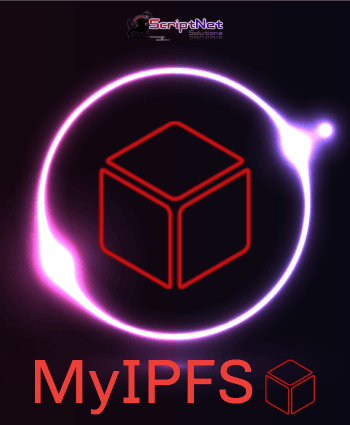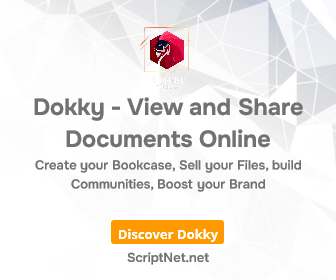Skate takes an app-centric approach to L2 fragmentation
The proliferation of blockchain networks, both layer-1 and layer-2 rollups, has cast a spotlight on user experience limitations. These challenges are evident for even seasoned crypto-natives who want to move and use assets across chains.
Traditionally, developers deploy applications across multiple blockchain networks, each acting in isolation with its unique state and unable to directly interact with other deployments of the same application on different chains. Such a process is costly, time-consuming and contributes to what is known as “application fragmentation.”
The problem, as identified by the founders of Skatechain, is rooted in “redundant development efforts, liquidity fragmentation and toxic liquidity flow.” This fragmentation hinders the seamless operation and interaction of decentralized applications ( dapps ) across various blockchains, resulting in inefficient operations, increased development costs and poor user experience.
Read more: The decline of crypto market liquidity: causes and potential for recovery
Skate, previously known as Range Protocol, seeks to establish the first universal application layer for all chains.
Skate proposes a “a hub and spoke model” that “relies upon transactions being matched and executed by users who sign intents, which are executed in real-time by using EigenLayer for faster finality,” according to a blog post published Wednesday.
The multichain interaction would be done by a competing set of off-chain “executors,” analogous to “solvers” or private market makers in other contexts, with the protocol auctioning off the right to settle the transaction among this diverse set of “systematic entities,” according to Range Protocol’s CEO Siddharth Lalwani.
“The key aim of this is that we are centralizing it a bit in favor of providing a better UX,” Lalwani told Blockworks.
The project has launched its first testnet built on the Optimism Bedrock tech stack. Mainnet is expected to be live by the end of the second quarter, Lalwani said, with a pilot group of operators, before eventually moving to an Eigenlayer AVS.
Current liquidity and interoperability solutions aim to solve the apparent user friction at a network level, an approach Skate argues fails to get at the root of the problem: that each deployment still has differing states.
An application’s “state” refers to the current condition or status of an application at a specific moment in time, encapsulated by all the stored information and data that the application is managing. This includes everything from user data and current settings to the application’s own operational data — essentially any data that determines how the application behaves and appears to its users.
“Apps that integrate Skate can run on all chains with one single state,” the team claims . “With a single deployment on Skatechain, apps will be able to interact with users on 1000s of chains.”
The idea, which it calls Universal Application Scope, is to keep the application logic and a unified state on Skate, while assets remain on their native chains. And not only on Ethereum and rollups, but even unrelated chains like Solana — the protocol is agnostic as to the underlying virtual machine environment.
That should provide a welcome benefit to dapp developers, according to Lalwani.
Read more: The crypto infrastructure is here, but where are the apps?
“This ensures foundational needs of builders and users are met efficiently, allowing each chain to focus on creating value-added services and laying the building blocks for a modular future,” Lalwani said in a statement.
In the background, the executors would make use of whatever the best settlement pathway for a given intent may be, bearing the latency risk in exchange for a small fee.
Backing from a slew of recognized Web3 names including EigenLayer, Polygon, Manta, Axelar and Pendle signifies strong industry support for its concept.
A future version would aim to handle more complex interactions.
For instance, take a collateralized stablecoin protocol like Grai. When a user opens a vault using staked ether to mint/borrow GRAI on Ethereum, then does the same on a rollup like Arbitrum, each vault (or a “vessel” in Grai’s lexicon) is isolated. That means you can’t take some GRAI on Arbitrum and use it to pay off your Ethereum debt, without first bridging.
With the application logic on Skate chain, the user could see their liquidity and debt as a single vessel, regardless of where the underlying assets are located.
“You can put collateral, say, $100 from Base, $100 from Arbitrum, $100 from Monad, and then you can actually mint GRAI on, say, Mantle,” Lalwani said.
Don’t miss the next big story – join our free daily newsletter .
Traditionally, developers deploy applications across multiple blockchain networks, each acting in isolation with its unique state and unable to directly interact with other deployments of the same application on different chains. Such a process is costly, time-consuming and contributes to what is known as “application fragmentation.”
The problem, as identified by the founders of Skatechain, is rooted in “redundant development efforts, liquidity fragmentation and toxic liquidity flow.” This fragmentation hinders the seamless operation and interaction of decentralized applications ( dapps ) across various blockchains, resulting in inefficient operations, increased development costs and poor user experience.
Read more: The decline of crypto market liquidity: causes and potential for recovery
Skate, previously known as Range Protocol, seeks to establish the first universal application layer for all chains.
Skate proposes a “a hub and spoke model” that “relies upon transactions being matched and executed by users who sign intents, which are executed in real-time by using EigenLayer for faster finality,” according to a blog post published Wednesday.
The multichain interaction would be done by a competing set of off-chain “executors,” analogous to “solvers” or private market makers in other contexts, with the protocol auctioning off the right to settle the transaction among this diverse set of “systematic entities,” according to Range Protocol’s CEO Siddharth Lalwani.
“The key aim of this is that we are centralizing it a bit in favor of providing a better UX,” Lalwani told Blockworks.
The project has launched its first testnet built on the Optimism Bedrock tech stack. Mainnet is expected to be live by the end of the second quarter, Lalwani said, with a pilot group of operators, before eventually moving to an Eigenlayer AVS.
Current liquidity and interoperability solutions aim to solve the apparent user friction at a network level, an approach Skate argues fails to get at the root of the problem: that each deployment still has differing states.
An application’s “state” refers to the current condition or status of an application at a specific moment in time, encapsulated by all the stored information and data that the application is managing. This includes everything from user data and current settings to the application’s own operational data — essentially any data that determines how the application behaves and appears to its users.
“Apps that integrate Skate can run on all chains with one single state,” the team claims . “With a single deployment on Skatechain, apps will be able to interact with users on 1000s of chains.”
The idea, which it calls Universal Application Scope, is to keep the application logic and a unified state on Skate, while assets remain on their native chains. And not only on Ethereum and rollups, but even unrelated chains like Solana — the protocol is agnostic as to the underlying virtual machine environment.
That should provide a welcome benefit to dapp developers, according to Lalwani.
Read more: The crypto infrastructure is here, but where are the apps?
“This ensures foundational needs of builders and users are met efficiently, allowing each chain to focus on creating value-added services and laying the building blocks for a modular future,” Lalwani said in a statement.
In the background, the executors would make use of whatever the best settlement pathway for a given intent may be, bearing the latency risk in exchange for a small fee.
Backing from a slew of recognized Web3 names including EigenLayer, Polygon, Manta, Axelar and Pendle signifies strong industry support for its concept.
A future version would aim to handle more complex interactions.
For instance, take a collateralized stablecoin protocol like Grai. When a user opens a vault using staked ether to mint/borrow GRAI on Ethereum, then does the same on a rollup like Arbitrum, each vault (or a “vessel” in Grai’s lexicon) is isolated. That means you can’t take some GRAI on Arbitrum and use it to pay off your Ethereum debt, without first bridging.
With the application logic on Skate chain, the user could see their liquidity and debt as a single vessel, regardless of where the underlying assets are located.
“You can put collateral, say, $100 from Base, $100 from Arbitrum, $100 from Monad, and then you can actually mint GRAI on, say, Mantle,” Lalwani said.
Don’t miss the next big story – join our free daily newsletter .
 License.
License.




















